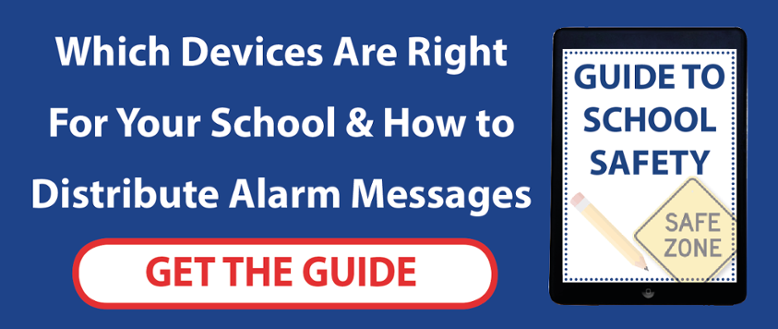
In order to deliver high-quality educational services, one of the primary concerns of all school staff is the health of themselves and their students, with the majority of schools striving to protect their employees and pupils as much as possible. However, as figures from the Health and Safety Executive show, incidents in schools are on the rise, with both accidents and violence posing a greater threat to pupils and disturbing classroom safety. However, there are measures that can be taken in order to leverage modern technology so as to safeguard our schools.
1. Make sure that the environment itself is safe.
This can be done by clearly following maintenance schedules and keeping track of any possible problems with the school building itself. Even minor issues such as a damaged window can prove hazardous to pupils and teachers, as well as raising potential liability issues. Proper safety training can go a long way towards mitigating this problem, as educators will be able to identify and deal with issues before they grow into threats. Additionally, making sure to have the right maintenance staff or contractors to deal with a problem (such as an electrical fault, water leak or damaged carpeting) can ensure that it will not occur again. Central to this, however, is having a proper organisational system in place so that staff can log these issues and monitor what progress has been made on them.
Maintenance problems are typically regarded as low-priority and can easily get forgotten amidst the bustle of the school week, by having a centralised location where these problems can be raised and updated by staff, even minor problems will not fall by the wayside to later develop into a serious health and safety concern. Software such as a critical alarm management system can fill this role exceptionally well, as it is minimally disruptive to install and can be easily used and viewed by any authorised member of staff, allowing them to schedule repairs as needed.
2. Fast response to emergencies.
In order to mitigate the potential consequences of serious accidents or violent incidents, schools should look to make sure that staff arrive on the scene within as small an amount of time as possible. This is especially true in situations where specially trained workers may be needed (i.e. qualified first aiders or special needs educators). To reduce response times and let staff know what is required, communications have to be kept concise and detailed and the alarm must be raised as quickly as possible. In this respect, a critical alarm management system can make all the difference.
The system is a simple software upgrade that can run on the schools existing networks and which links all staff together via an app that can be run on desktop computers or mobile devices. The app allows staff to raise an alarm without leaving their classroom and fill out as much detail as necessary. Once logged, the automated system notifies the relevant staff members (via the aforementioned app), all within seconds and without needing human approval. This massively cuts down on response times and prevents confusion in the initial stages of an emergency. Additionally, serious incidents can be automatically flagged to senior staff for continued monitoring until the crisis is resolved.
3.Secure against intruders.
Although many professionals assume that physical threats to health and safety primarily come from the environment and students themselves, an increasing number of violent incidents involve people from outside of the school trespassing on the premises and then coming into contact with staff or pupils. These intruders can be random, but can also be disgruntled parents or family members or even other children seeking to settle disputes with a rival. In order to prevent these situations from becoming a threat, teachers need to have a clear set of guidelines in place to tackle them and the right tools to do so. This means having devices and sofware that are easy to understand and use and which require minimal training hours in order to wield effectively. Additionally, a fast alarm system can notify senior staff and summon assistance to a specific location within moments, allowing lone teachers to know that they are backed up when dealing with an intruder.
4. Have a robust set of procedures in place for dealing with violence.
School safety is increasingly being tested by attacks on students and teachers from other pupils. This can be down to several reasons, such as behavioural problems, grudges or special educational needs, but in each case, employees need to be able to rapidly get help from colleagues. In such situations, using an app may be too slow or may further anger a violent individual. To tackle this, teachers in high-risk environments can be issued with mobile personal alarm devices (MPERS) which act much like panic buttons, raising a high-priority alarm on the system and notifying nearby staff of the emergency so that they can intervene. These panic buttons can be activated surreptitiously without alerting the attacker, allowing the teacher to try and defuse the situation whilst help is on the way. Furthermore, it allows special needs educators to not put undue stress on other class members by openly raising an alarm.
5. Use data to your advantage.
By having a fully networked alarm system and associated devices, senior staff can take advantage of the fact that all communications and interactions with each alarm are logged on the system. This allows teachers to quickly catch up with ongoing problems and also analyse the effectiveness of responses to previous emergencies. Ultimately, this enables every school to gradually alter their training procedures to better fit with their unique needs and situations when it comes to health and safety. Over time, this means that staff can become more and more effective at dealing with crises and classroom safety can steadily improve. It also means that trends leading up to incidents can be better identified, allowing administrators to intervene and nip problems in the bud long before they become serious threats.
ANT supplies a large range of equipment and systems geared specifically towards enhancing health and safety across a range of industries and workplaces, offering tailor-made solutions for any organisation's needs. The majority of these services can be scaled to any budget or infrastructure level, ensuring that any school can benefit from upgrades to their existing systems. Furthermore, these upgrades are purpose built to cause as little disruption as possible, enabling teachers to concentrate on their tasks without having to worry about retraining or navigating complicated software. Instead, ANT's systems are made to be as user friendly and intuitive as possible, massively improving both emergency response times and workers' peace of mind.





